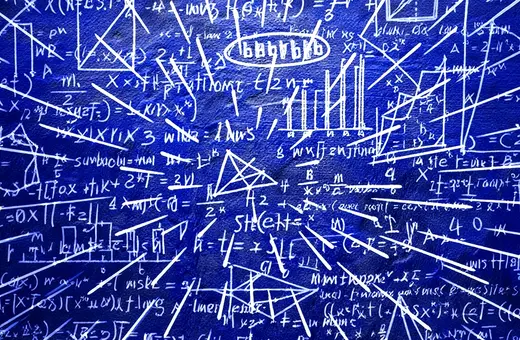Part philosophical, part scientific, Leibniz believed that our world - "the best of all possible worlds" - must be governed by what is known as the Principle of Optimality. This seemingly outlandish idea proved surprisingly powerful and led to one of the most profound ideas in theoretical physics. Jeffrey K. McDonough tells the story.
The great German polymath Gottfried Wilhelm Leibniz famously insisted that ours is the best of all possible worlds. The claim that our world couldn’t possibly be better has never been very plausible. It was hard to believe when Leibniz made it in the seventeenth century on the heels of the horrific Thirty Years War. It didn’t seem any more likely when Voltaire heaped ridicule upon it following the Lisbon Earthquake of 1755. And, of course, it will probably not find many adherents today as we trudge along under the weight of a global pandemic, political uncertainty, and an environment on the verge of collapse. Leibniz’s thought that ours is the best of all possible worlds is, in short, incredible. Incredible or not, however, Leibniz’s implausible idea lies at the heart of one of the most profound, most successful, most tantalizing developments in the theoretical physics. Call it the story of Leibniz’s Principle of Optimality.
The roots of Leibniz’s principle reach back to at least Heron of Alexandria’s discovery of the optical law of reflection and to ancient thinking about optimizing territories and storage containers. The story of Leibniz’s principle begins in earnest, however, with a controversy that erupted between two of the finest mathematicians of the early modern era, René Descartes and Pierre de Fermat. Descartes was the first to publish the optical law of refraction in essentially the form we accept today. Many at the time, however, doubted his mechanistic demonstration of the law, which involved drawing clever analogies to the behavior of tennis balls and rackets. Seeking a more rigorous derivation, Fermat showed how both the optical law of reflection and the optical law of refraction could be derived from a quickest path principle: in a standard set of cases, a ray of light will take the quickest path from, say, a lamp to an eye regardless of how it is reflected or refracted.
As was typical of the era, Fermat and the followers of Descartes managed to snatch bitter controversy from clear progress. Fermat claimed that Descartes had never proved the law of refraction and insinuated that he had stolen his results from the Dutch astronomer Willebrord Snell. Cartesians insisted that Fermat’s derivation was technically flawed and was at any rate a regression from mechanistic ideals. Leibniz stepped into this controversy with a remarkable paper published in 1682. The paper aimed to show that Descartes’s mechanistic approach to the laws of optics and Fermat’s optimization approach could be reconciled. Leibniz sided with Descartes on some technical points and agreed that a mechanistic explanation of the laws of optics could be given. Nonetheless, he also embraced the spirit of Fermat’s proposal, showing how the laws of optics could be derived from optimal an easiest path principle and applied to an even greater variety of cases than Fermat had considered. The paper was a multifaceted breakthrough that showed how optimization methods could be reconciled with mechanistic explanations, how such methods could be married to Leibniz’s powerful new infinitesimal calculus, and – perhaps most profoundly – that optimization principles needn’t be restricted to kinematic notions such as distance and time but could be extended to dynamic notions such as “ease,” work, and energy.
___





















Join the conversation